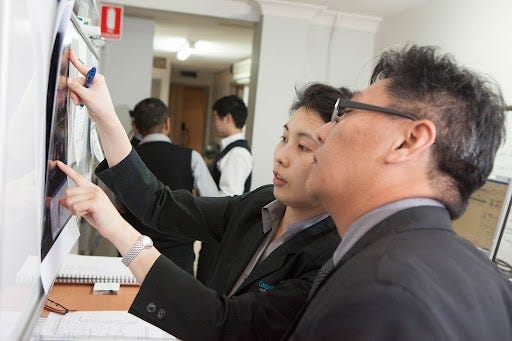
The majority of commonly performed nuclear medicine studies use a small amount of radioactive tracer called Technetium, which is injected into a vein (or swallowed, depending on the procedure). This tracer accumulates in the area of the body being examined, where it gives off gamma rays which can then be detected by the gamma camera.
Overview
Nuclear medicine is commonly used in a variety of diseases including heart disease, stress fractures, bone or joint pain. Nuclear medicine provides functional information for many organs of the body. It can provide early detection of many diseases before these are detected by conventional radiology, allowing for earlier treatment and better prognosis.
We use Single Photon Emission Computed Tomography (SPECT- CT). This technology uses a nuclear medicine gamma camera with a very low dose CT scan. This further increases accuracy and precision of the diagnosis.
Some of the organ functions that can be assessed with Nuclear Medicine/ SPECT include:
- Differential kidney function, assessment of hydronephrosis/outflow renal obstruction
- Heart blood flow and function (Myocardial perfusion scan)
- Gallbladder function
- Bones for fractures, infection, arthritis and tumours
- Screening for the presence or spread of cancer in various parts of the body skeleton
- Bleeding into bowel
- Presence of active infection/inflammation
- Overactive thyroid, functional status of dominant thyroid nodules
- Localisation of lymph nodes before surgery in patients with breast cancer
Preparing for a Nuclear Medicine Scan
Please bring your referral (letter from your doctor) and your Medicare and/or Pension Health care card with you to your appointment. It is important to bring all previous imaging and reports relating to the region.
You will receive specific instructions for the procedure you are having at the time of making your booking. Some examinations do require fasting and some may require ceasing medications.
As the test involves a radioactive injection, please advise the technician or physician if you are pregnant or if you are breastfeeding prior to your examination.
Scanning
Scanning will vary depending on the examination being performed. With some scans the isotope is taken up very quickly, so the scan will take approximately 30 minutes. For other examinations you may need to return for a second scan after 2–3 hours or even later. Our reception staff and our technologist will advise you at the time of booking (particularly on the day of the test) how long your specific examination will take.
Results
Some nuclear medicine results require a large amount of data to be processed, therefore your results may not be ready immediately. Our staff will inform you when the result will be available.
We strongly advise that you return to your referring doctor, so they may discuss your results with you.
We understand that some patients are anxious about having tests performed. If you have any questions or concerns, please do not hesitate to ask our staff.
FAQs
What am I injected with?
In the majority of studies, a radioactive tracer labelled with Technetium is injected into the bloodstream through your veins. This will emit gamma rays and will get picked up by the gamma camera to construct images.
Are there any side effects from the injection?
It is very rare to have an allergic reaction (and there is no cross- reaction between radioactive tracers and the intravenous contrast used for CT scans or angiograms), but a radiologist is present if a situation arises. If you have previously had reactions to nuclear medicine radioisotope injections (eg. Itchiness, rashes etc.), please notify our technologist before the injection.
Is it ok to be around children after my nuclear medicine exam?
The amount of radiation emitted from your body depends on the type of examination you are having. In general, this is quite small. However, you may prefer to minimise prolonged and close contact (particularly with small children) for up to 24 hours after tracer injection. If you are pregnant (or think you may be) or are breastfeeding, please inform our staff at the time of booking.
Will I have to run on the treadmill?
Depending on your doctor’s request, for a myocardial perfusion study, you may exercise on the treadmill (like the exercise stress test, so comfortable clothing and footwear would be preferred), and the tracer will be injected at peak exercise.
Why do I have to stop caffeine?
If you are having Persantin myocardial perfusion studies, any form of caffeine (including coffee, tea, coke or chocolate) may antagonise the desired effects of Persantin and interfere with the result of the test. Therefore, you will need to stop (any form of) caffeine for 24 hours before the study.
How long does the injection stay in my system?
The half life of Technetium is 6 hours. 24 hours after injection, there is only a negligible amount of isotope remaining in your body.
Will I be able to drive after?
You should not feel any different or experience any drowsiness after the injection. Though, if you have had previous unpleasant experiences with needles or injections, please inform our technologist.
Why does the nuclear medicine exam take so long?
As the gamma camera is picking up the radiation emitted from your body to create images, this process will take time.
What is SPECT?
SPECT stands for Single Photon Emission Computed Tomography. In this study, the gamma camera will rotate 360° around the region of interest in your body and create 3D cross-sectional images. This will enable subtle abnormalities to be demonstrable better than planar/2D images.

